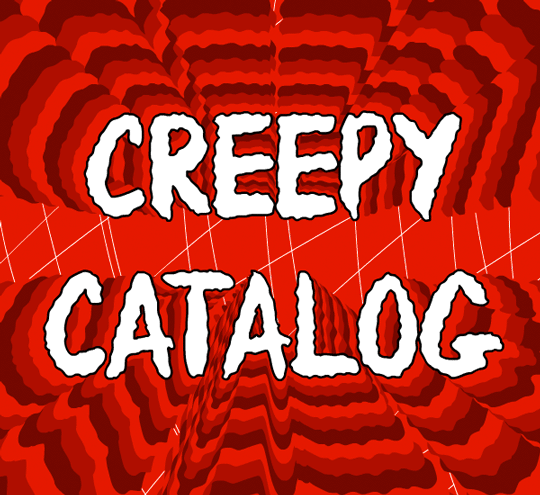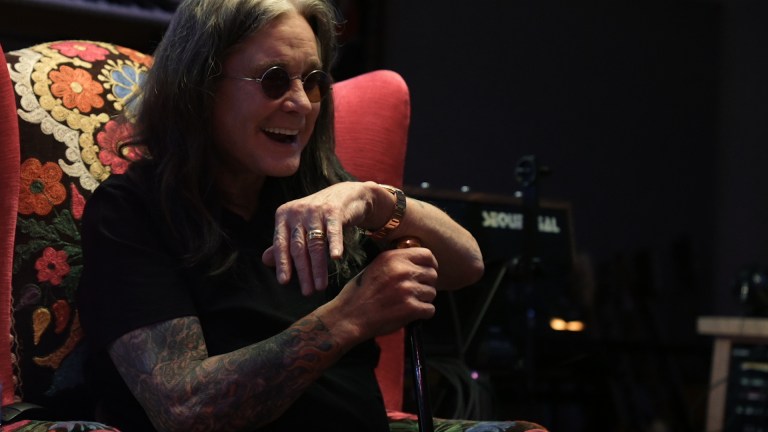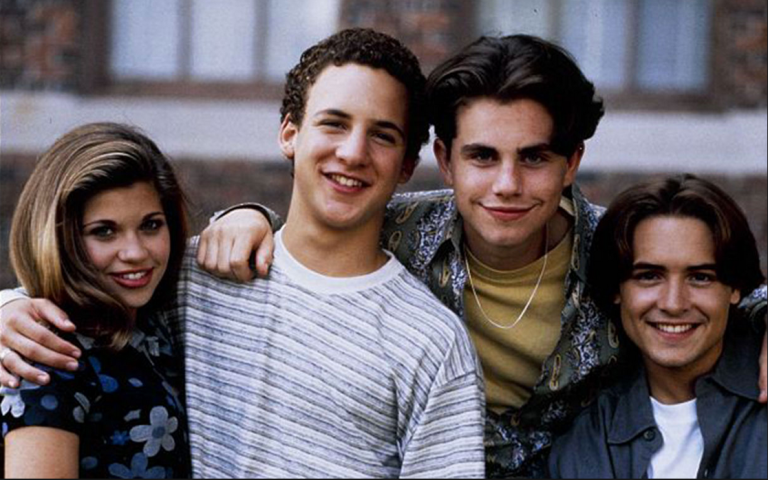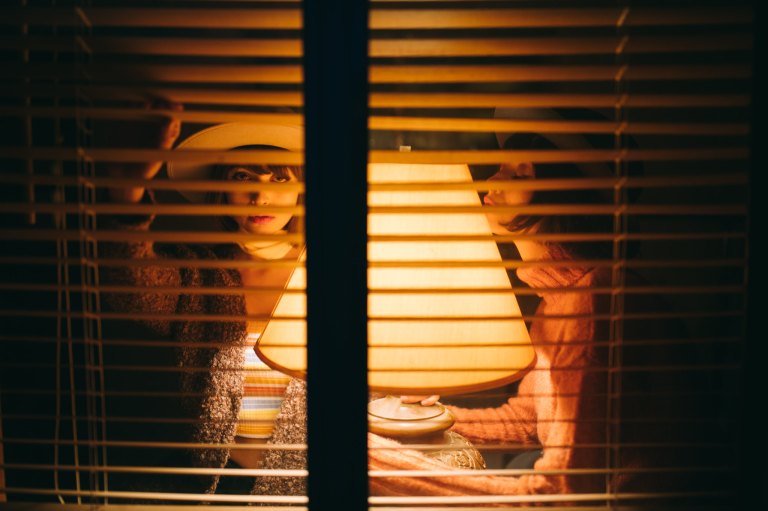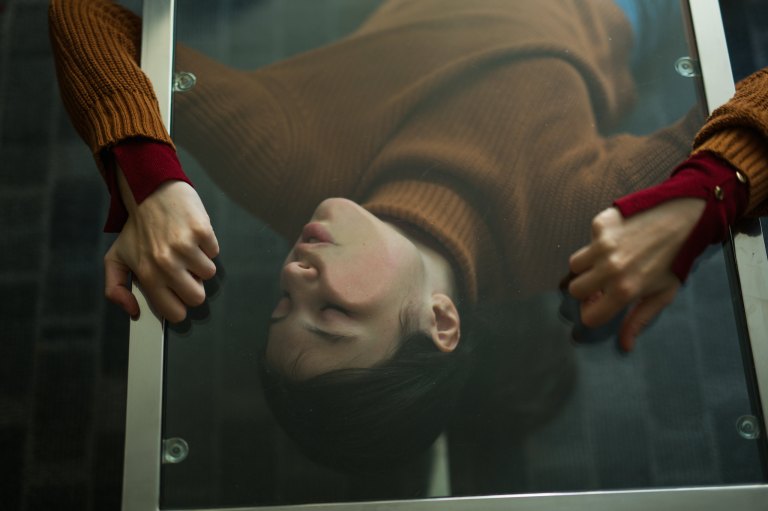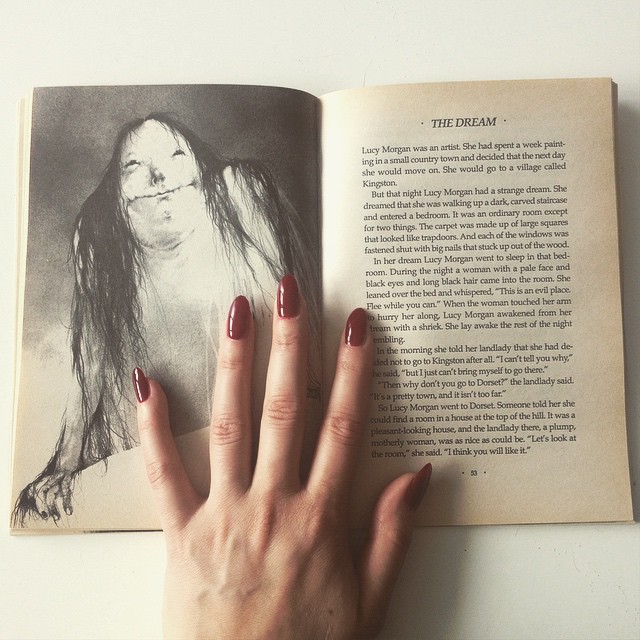
5 Stories From “Scary Stories To Tell In The Dark” That Were Pure Childhood Nightmare Fuel
If you grew up in the 1990s, you knew them. They were elementary school hot commodities; usually you had to sign up on the library’s waiting list just to get your hands on a copy. Alvin Schwartz’s “Scary Stories To Tell In The Dark” series was, at its heart, a repackaging of folk tales, urban legends, and campfire ghost stories — but to the wide-eyed gaze of a child in the days before the internet, these books were the holy grail of scaring yourself shitless.
Whether it was the open-endedness of a tale that really got you or the drippy, gruesome illustrations by Stephen Gammell, “Scary Stories To Tell In The Dark” left all the other ’90s kids horror in the dust. “Are You Afraid Of The Dark”? Creepy, but you could still sleep with the lights off. “Goosebumps”? Good for a few scares (and occasionally a few laughs) but it didn’t keep you awake at night. It was Schwartz’s trilogy that dug deep into your childhood skull, making you worry if spiders really could live inside your cheek or whether you should check the back seat of Mom’s car for murderers.
The Wendigo
I’m starting off strong but Jesus Christ, I remember this one scaring me so badly when I read it the first time that I put the book down and wouldn’t touch it for a week. It’s about a wealthy hunter who travels to a remote part of Canada where nobody ever hunts because apparently he’s a real smart guy. He manages to find a guide named DeFago and during their travels they set up camp near a frozen lake. In the middle of the night, he hears the wind calling DeFago’s name and sees something huge and dark swooping out of the sky. DeFago understandably says “screw this” and bolts, but whatever it is grabs him. As he disappears, the hunter can hear him crying, “Oh, my fiery feet! My burning feet of fire!” until his voice fades away.
DeFago never comes back (duh) and eventually the hunter finds his way back to civilization. A year later he returns to a trading post in the same area, where he’s told about the Native American spirit of the Wendigo. Later, a stranger joins him by the campfire and he somehow knows it’s his former guide. The stranger is wrapped in a blanket, wearing a hat down low around his face, and doesn’t answer his questions. The hunter, having no social skills, pulls the hat off his head AND IT’S JUST A PILE OF ASHES.
Allow me to tackle everything terrifying about this story to a child.
- Why did the Wendigo target DeFago? He seemed to know it was coming for him but we never find out why.
- That line about the fiery feet. It’s so graphic. You find out later in the story that the Wendigo — get this — DRAGS its prey along the ground faster and faster until their entire body is BURNED AWAY. No, this part’s not implied. They just straight up say it. TO CHILDREN.
- HOW DID A PILE OF ASH PUT ON CLOTHES, WALK UP TO A CAMPFIRE, AND SIT DOWN? HOW?
I think I remember this one most vividly because while the other stories were scary in relation to things that could really happen (which makes sense why they’d haunt a kid even in the daylight), after reading it I should’ve been able to say, “Good thing I don’t live in remote Canada and I’m not a hunter and Wendigos don’t exist!” But it stuck with me, hard, and even to this day sometimes I think out of nowhere, Oh, my fiery feet, my burning feet of fire!
The Red Spot
This one could easily have the most recognizable illustration from any of the books, mainly because as kids we were like “WHAT THE HECK CAN SPIDERS REALLY DO THAT?!” The story itself was short and sweet: a spider was on Ruth’s face. Ruth gets a red spot. Ruth freaks out about red spot. Ruth’s mom says “chill, it’ll go away”. It does NOT go away, but instead explodes with a ton of baby spiders that had been laid in Ruth’s cheek by the mother spider.
I don’t know what horrified me more, the idea that spiders could potentially lay eggs in my cheek or the hideous gaping hole they left behind in Ruth’s. And to be totally honest, it still horrifies me. I’m pretty sure that spiders can NOT, in fact, do this — but I refuse to Google it and don’t you dare tell me otherwise. Whether true or not, this was a beautifully simple example of how Schwartz’s stories paired with Gammell’s illustrations could stick with you long, long after you first laid eyes on them.
Harold
Oh, Harold. This one jumped on you as soon as you turned the page; a distinctly corpse-like scarecrow hanging by its neck from a stick was the VERY first thing you saw and it was all downhill from there. Two assholes, Thomas and Alfred, decide to make “a doll the size of a man” and put it in the garden to scare birds. And, because they’re assholes, they make it look like a guy they hate named Harold. Also, they name it Harold. And take out their aggression on Harold when they get angry. You know, like sociopaths.
One night when they’re wiping Harold’s face with food (???) Harold decides he’s had enough and grunts. Thomas immediately says “Yeah it’s probably best if we just threw him in the fire” because he’s not totally insane. Alfred, who I guess IS, says “We don’t know what’s going on, we’ll just leave him behind when we leave with the cows”. Because I can’t see anything wrong with THAT plan.
So they put Harold in a corner and stop talking to him but Harold keeps grunting every now and then and for some reason they decide they probably imagined it, so Thomas and Alfred go back to yelling at him and kicking him around. Smart. Now Harold starts growling, which I would too if I lived with these douchebags. Inexplicably, this doesn’t seem to bother them.
Thomas and Alfred finally decide to do one smart thing in their lives and they leave with the cows early. But the smart doesn’t last long as they realize they forgot milking stools. Instead of saying “We will buy new stools because we value our lives”, they say “What could that terrifying scarecrow who’s come to life really do?” and Thomas goes back for them. Alfred soldiers on but Thomas doesn’t catch up to him. When he’s far enough away that he can see the roof of their house, what do you know, there’s Harold — AND I QUOTE — “stretching out a bloody skin to dry in the sun.”
WHAT IS THIS INSANITY?! Why and how did Harold come to life? Why does he torture them psychologically before murdering them? When he DOES murder, why skinning? AND WHY IS THIS IN A BOOK FOR CHILDREN?!?!
The Drum
https://instagram.com/p/0c_L3HGzEJ/
I did some research on this one a while back because, similarly to The Wendigo, The Drum had a certain bit that still pops up unbidden in my brain to this day. It’s apparently based on a moral children’s story from the late 1800s called The New Mother. It’s meant to teach children not to be naughty and holy shit does it do the trick. Seriously, if you have kids, read them this and see if they’re not on their best behavior for weeks.
Two sisters, Dolores (7) and Sandra (5) live with their mother and baby brother. One day, they come across a gypsy girl playing a drum. As she plays, a little mechanical couple come out of the drum and dance. Dolores and Sandra experience immediate cool-drum-envy and beg the gypsy to give it to them.
The gypsy girl has issues. She says she’ll give it to them only if they’re really bad. They have to misbehave, come back the next day and tell her how they did it. The sisters do this and their mother gets upset. When they tell the gypsy girl how bad they’ve been, she says they have to be MUCH worse than that. Lather, rinse, repeat a few times until their mother tells Dolores and Sandra if they don’t stop, she’ll go away with their little brother and they’ll get “a new mother with glass eyes and a wooden tail”.
But the girls REALLY want this awesome drum so they keep pushing their luck. Finally the gypsy girl laughs at them and says she never planned to give them the drum. Dolores and Sandra rush home but GUESS WHAT LOSERS mom has had enough of your shit because she’s gone. So is their baby brother. And there’s their new mother — “glass eyes glistening, her wooden tail thumping on the floor”.
There’s two main elements that made this story so scary for me. One is the idea that someone could be so cruel. I mean yeah, Dolores and Sandra were jerks, but the chilly way the gypsy girl goads them into misbehaving and then laughs at them when they do is not a normal behavior most children are familiar with. It leaves you wondering “Why did she do that? What twisted pleasure did she get from ruining their lives?” The other is, obviously, the new mother. Just what the hell has glass eyes and a wooden tail? I still can’t picture it clearly in my head, despite the vivid description of the tail thumping on the floor. All I know is that it’s spooky and weird and a completely effective way to terrify little kids into minding their manners.
The Dream
https://instagram.com/p/0ve9FSTiHp/
Another of the more famous illustrations, the picture that accompanied The Dream always weirded me out because the lady with the long black hair doesn’t look particularly mean. Or even scary, really. But there’s something super unsettling about her smile, like the opposite of Mona Lisa.
In this story, an artist named Lucy Morgan travels from town to town painting, which sounds like a pretty sweet gig to me. She has plans to go to a place called Kingston next, but that night dreams a terrible dream about a very specific spooky house with a very specific spooky room. When she tries to sleep in her dream, a woman with black eyes and black hair tells her that the place is evil and she should get while the getting is good. She wakes up, terrified, and decides no thanks, Kingston, no thanks. Instead she goes to another town called Dorset.
It’s all in vain, though, because Dorset is exactly where the house from her dream is. She doesn’t leave because the landlady seems nice, but when someone knocks on the door it’s the black-eye-black-hair woman. So Lucy scrams. The end.
“The Dream” isn’t particularly violent, gruesome, or outright scary — just like its illustration. But the more I thought about it, the more it creeped me out. I still can’t quite put my finger on it: was it the feeling of inevitability, being unable to escape a fate that you’re destined for? Was it the unspoken idea of an evil presence outside of the woman luring Lucy to her death? Or was it just that lady’s weird smile?
Those are just the first stories that come to mind when I recall “Scary Stories To Tell In The Dark”.
Of course, there are other classics — The Bride, High Beams, Oh Susannah — but out of all those, something about these tales stick with me to this day. I wouldn’t doubt that they had a large part in shaping who I’d be as a horror-loving adult, and maybe they did the same for you. What was your favorite/scariest story from this trilogy? Let me know in the comments! ![]()
